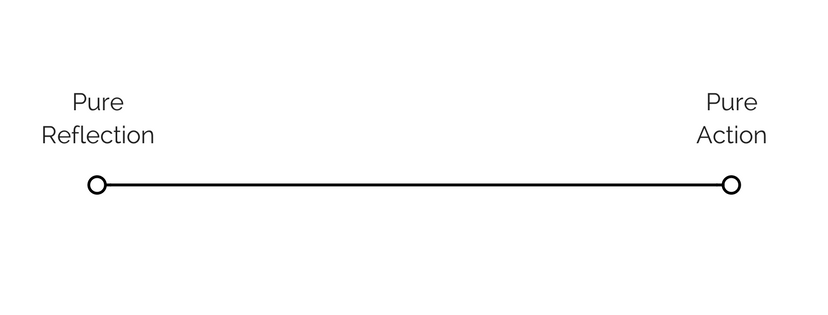Action is directed by heuristics, some of which are simple, some of which are complex and conflicting. Examples: “Be of value to others.” “Avoid pain or discomfort.” “Do more of what you enjoy and find exciting, and less of what you don’t.”
Reflection is guided by questions, some of which are context-specific and small, some of which are big and universal. Examples: “What do I want to do with my life?” “How can I do better next time?” “Why is she doing that?”
These two modes form the base of a pyramid. I give it the rather innocuous title of “the pyramid of life.” It’s the simplest conception of human existence that I have. In prose, it can be stated as follows: The two modes of life—action and reflection—are guided by heuristics and questions, which, in turn, are determined by an overarching philosophy.
Visually, it looks like this:
Life is simple, and to make your way through it you need just three things; heuristics, questions and a philosophy.


